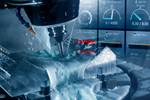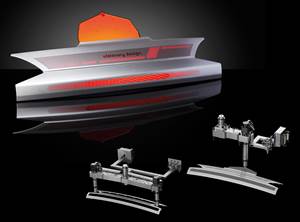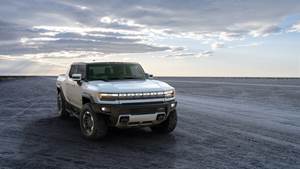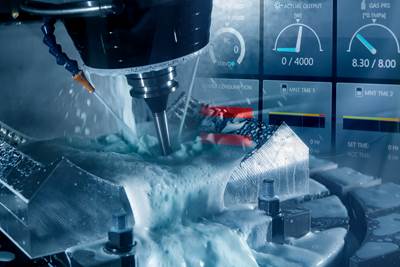What Electric Vehicles Mean to Mold Builders
Harbour Results CEO Laurie Harbour on why EVs make the situation at mold and tool shops more challenging.
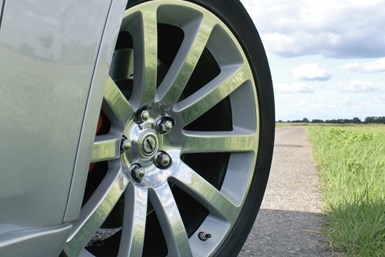
The slow-but-accelerating proliferation of battery electric vehicles (BEVs) is a good news-bad news situation for North American automotive tooling suppliers, says Laurie Harbour, president and CEO of Harbour Results Inc., which has recently completed a study of the industry.
The good news is that there is a growing number of EVs. Harbour says that the overall number of vehicle nameplates will grow between 2023 to 2029 by 18%, from 210 to 249, and within that, while EVs represent 20% in 2023, they’ll be up to 46% by 2029. All of that means new products need new tools. Good. However, there are the other factors that are not-so-good.
Fewer Parts Mean Fewer Tools
EVs require fewer tools than comparable vehicles with internal combustion engines. Harbour says the tooling spend is about 30% lower for an EV. She explains that part of it is the ICE itself: no engine means no tools for casting blocks. And there is a far less-complicated gearbox in an EV. Again, fewer tools. There is another significant difference, possibly becoming the significant difference: a reduction in trim levels for a given vehicle.
Less Trim
Harbour points out that if you consider a Tesla, the main difference from one Model 3 to another is the propulsion system, not different fascias and trim. Options tend to be software upgrades rather than interior differences.
Consider the HUMMER EV pickup, she says. When launched, it was the top-of-the-line trim, period. This is not the typical situation where several models of a given vehicle are available, with the variants leading to the requirement for more tooling.
Harbour says that for years, OEMs have been telling her that they’re working to reduce the number of trim levels and overall complexity. Complexity generally leads to higher costs and lower quality. Now—and arguably because of what Tesla has accomplished with its series of mono-models (yes, you can get RWD or AWD or, rather than a black interior in a Model 3, an optional black and white interior)—they are getting closer to that with their EVs.
What Megacastings Mean
And while this is not necessarily an EV-related aspect, Tesla’s use of megacastings from the front and rear body structures is upending the number of individual parts—and stamping dies—needed.
According to Tesla, 171 stamped and welded parts used in the front and rear of the Model 3 body structure are replaced by two castings in the Model Y.
Not only does this mean fewer tools, but there is an array of other savings, such as reduced welding, which means fewer robots, which means reduced floor space requirement, etc. Harbour says when there’s a total cost analysis made, the megacasting approach pencils to the positive. No wonder this is an approach other OEMs have announced they will be pursuing.
Looking Ahead
According to Harbour, the next 18 months will be challenging for some mold and tool builders. The simple reason: not much in the way of new vehicle launches. However, as 2024 is underway, there will be plenty of activity in the North American market with new EVs and light-duty pickups from the Detroit Three. In addition, Harbor points out that trucks are particularly good for mold and die shops as there is a wide array of trims for the vehicles. What’s more, a year or two after a new truck launches, a new SUV is typically launched based on the truck, so that means even additional opportunities.
But for some shops getting through the next 18 months is going to be tough from a financial point of view. What’s more, Harbour says that while the Detroit Three are bringing back work from China, which is certainly good for the North American shops, she thinks that in three or so years, Chinese companies are likely to drop their prices and become extremely cost-competitive to the degree that purchasing people are unlikely to be able to overlook it.
She recommends that shops work on improving their overall competitiveness. This can take the form of standardization of designs, adding robots to the shop floor and achieving higher machine efficiency. For example, if a shop can take the hours out of a build, it can reduce its price if it needs to do so to get the work or maintain its price and achieve a better margin.
All that said, Harbour’s Manufacturing Pulse Study found that 45% of mold and tool shops are optimistic or very optimistic about the future. However, she says about 25% of the supply base is struggling. She suggests these companies will have to focus on improving their flexibility and operational efficiency—and focus on their pricing, not taking on jobs that will do nothing but sink the bottom line.
Related Content
Industry Report: Automotive Outlook, Forecast, Disruptions and Industry Transitions
A recent presentation by Auto Forecast Solutions shares some interesting trends to help those who work within the automotive industry better understand key trends.
Read MoreHarbour Results, AutoForecast Solutions Release Battery-Electric Vehicle Market Study
The study analyzes the transition from an industry dominated by the internal combustion engine to battery-electric mobility and its impact on the supply chain, which will have ripple effects from automakers to tool and die shops.
Read MoreHot Runner Technologies Advance Quality Surface Requirements in Automotive
Oerlikon HRSflow hot runner systems combine cost-efficient production with a precise process control for a variety of automotive applications.
Read MoreMold Innovations Power Unique Auto Lighting Elements on Hummer EVs
Diamond machining, electroforming of micro-optical inserts and modified latch-lock system help injection molds produce unique forward lighting elements.
Read MoreRead Next
North American Tooling Spend Forecasted to Reach $8.3 Billion in 2025
Recent automaker profits are funding an increased number of new vehicle launches over the next few years, according to Harbour Results’ latest in-depth study, which in turn is expected to drive up tooling spend growth.
Read MoreHarbour Reports Tooling Industry Growth Despite Challenges
The Q1 2022 Harbour IQ Manufacturing Pulse Study indicates that the tooling industry rebounded in 2021, with companies seeing year-over-year revenue growth.
Read MoreAre You a Moldmaker Considering 3D Printing? Consider the 3D Printing Workshop at NPE2024
Presentations will cover 3D printing for mold tooling, material innovation, product development, bridge production and full-scale, high-volume additive manufacturing.
Read More
.jpg;width=70;height=70;mode=crop)
